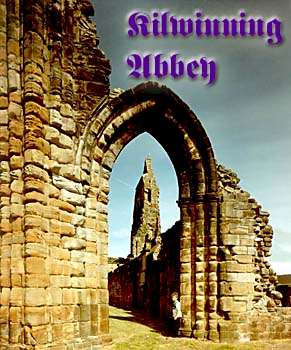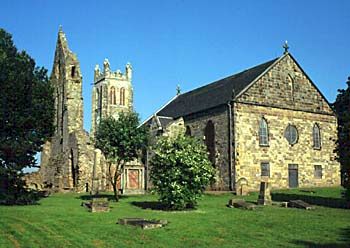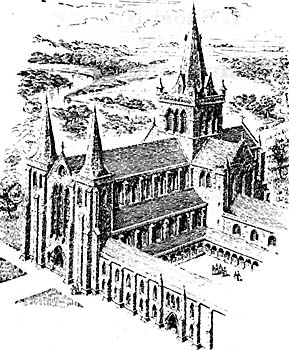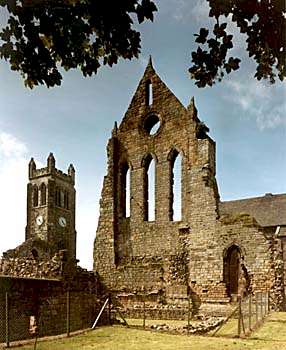| A little known fact tells of the link between Kilwinning , it’s abbey and
a great hero of Scottish Independence - |
“For we fight, not for glory, nor for riches, nor for
honour,
but only and alone for freedom,
which no good man gives up but with his life” |
Stirring words, known throughout the world, of the letter from the Scottish
Assembly (comprising eight Earls and thirty-one Barons) to Pope John 22nd,
or the Declaration of Arbroath as it is better known and also the first great statement of nationhood in history. The man who penned it lies in a
vault beneath the ruins of the historic abbey of Kilwinning
The reference to Bernard Linton’s burial at Kilwinning comes in a reliable
medieval source ... ‘The Isle of Man Chronicles’. |
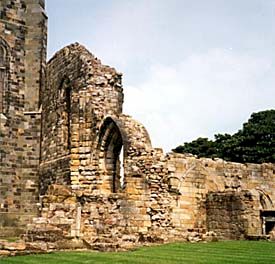 |
The choice of Kilwinning
is not unexpected, the monks were of the Tyrinensian Order of The Benedictines, as were those of Arbroath so he would have visited here from
time to time.
But there is an even stronger link. On his retiral from the
Chancellorship,
he had been appointed Bishop of the Isles which then had as its base the
vulnerable Scottish outpost of the Isle of Man and to where he made frequent trips from the port of Irvine. It is most likely that he died here
or on one of his journeys making Kilwinning the most suitable place in status for his return and/or burial. |
| Exactly where in the Abbey it is not stated, but under the present Heritage
Centre is the most likely possibility as the North Tower was often the location of the Consistory Court and a place of special importance. Until
about two hundred years ago various ranges of vaults beneath the abbey ruins were still partly accessible but with the rebuilding and extension of
the Parish Church, no possible means of access is now discernible nor any
indication of what other treasures may be there. |
|
